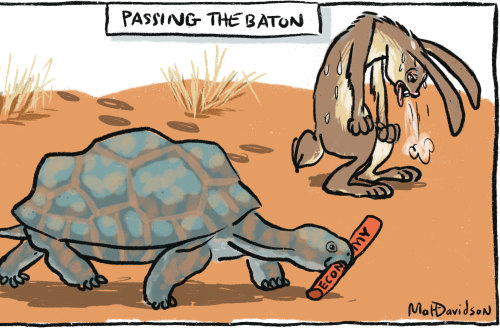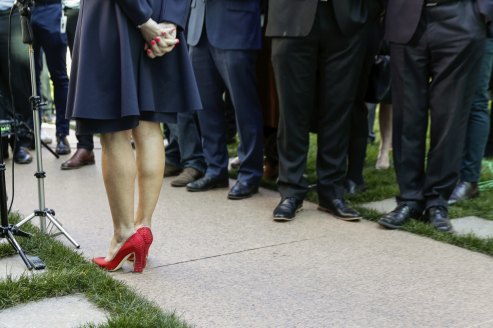Think like an economist: learn these four principles for success
It’s that time of year for self-improvement – for another week, at least, surely.
Cue a collective outburst of resolution-making, goal-setting and generalised navel-gazing –aforementioned navels being somewhat distended by the excesses of the holiday season.
The change of calendar year is a time when many of us, in the nomenclature of Nobel Memorial Prize in Economics winner and author of Thinking, Fast and Slow Daniel Kahneman, consciously try to shift from a System 1 to System 2 style of thinking.
In contrast to System 1 thinking, which is instantaneous – driven by habit and impulse, representing the “fast” part of Kahneman’s book title – System 2 thinking is the slower, more deliberate process of consciously weighing options and selecting an optimal path for our lives.

If economists had their way, of course, we’d be System 2 thinkers all the time. These days, economists no longer maintain their former fantasy of humans as always rational decision-makers. They do, however, continue to point out that we’d all be a lot happier if we did make more conscious decisions.
So, if you’re keen to extend your System 2 thinking well into the new year – and beyond – here are four core principles of economic literacy identified in a recent paper by the Reserve Bank economists Madeleine McCowage and Jacqui Dwyer.
In it, they essentially endorse the list of principles outlined by economists Betsey Stevenson and Justin Wolfers in their introductory economics textbook Principles of Economics.
In their text, Stevenson and Wolfers identify the following four essential principles of economics – ways of thinking which, if internalised and adhered to, can help not only societies but individuals to make better decisions and maximise happiness in their daily lives.
The “cost-benefit” principle
Basically, everything comes at a cost. Why? Because of scarcity. If there were no scarcity – if time and money were boundless – there would be no need to settle exchanges via the mechanism of setting prices. Want a car? You got it! Want more time? Sure, here’s an extra year of life.
Sadly, life’s not like that. You want a car? That’s $29,990 thanks. Want $29,990? That’s several years of savings on the average full-time salary, after taxes and living expenses. Want those several years back? Sorry, no can do. Bummer, right?
On the brighter side, when we do exchange our time and our money, we can obtain goods and services that improve our lives – which yield “benefit”.
The first principle of economics is just to be aware of these various costs and benefits when making decisions.
As Stevenson and Wolfers summarise: “Costs and benefits are the incentives that shape decisions. You should evaluate the full set of costs and benefits of any choice, and only pursue those whose benefits are at least as large as their costs.”
The “opportunity cost” principle
This is the idea that every choice you make is actually a myriad of decisions to NOT do other things.
A decision to go to the movies is, in truth, a cascading ripple of other decisions to, for example, not go for a bushwalk, not take a nap, not go for a bike ride or, indeed, to not work an extra hour and get more income.
So, when you’re performing your cost-benefit analysis on whether to go to the movies, don’t simply observe the ticket price and whether you can afford it. Also consider what other pleasurable things you could be doing and remember economists tally “benefits” not only in pure dollar terms but in terms of how much overall happiness different actions bring.
“The true cost of something is the next best alternative you have to give up to get it,” Stevenson and Wolfers advise.
The “marginal” principle
Many of us get hung up trying to decide in advance how much of something we should have in our lives. How many kids should I have? How many chocolate bars should I eat? How many pairs of shoes should I own?

Economists advise breaking down such decisions into smaller decisions and – crucially – thinking “at the margin”. Have one kid and see how you like it. Then, you can think about whether the benefits of having an additional child outweigh the costs.
This approach yields the extra benefit of granting better information on the actual costs and benefits entailed by different choices.
“Decisions about quantities are best made incrementally,” offer Stevenson and Wolfers. “You should break ‘how many’ questions into a series of smaller, or marginal decisions, weighing marginal benefits and marginal costs.”
The “interdependence” principle
This brings us to our final principle, perhaps best surmised by another economist, John Maynard Keynes, with the famous phrase: “When the facts change, I change my mind. What do you do, sir?”
Life happens. And when it does, it affects all potential decisions. As a result, there can be no “set and forget” when it comes to optimal decision-making. What works one year, under one set of circumstances, may not work for you next year.
As Stevenson and Wolfers conclude: “Your best choice depends on your other choices, the choices others make, developments in other markets and expectations about the future. When any of these factors changes, your best choice might change.”
So, in sum, if you want to think like an economist: slow down. Breath. Reflect. Assess the information at hand. Make your decisions. Be flexible. Review future decisions in light of new information.
There’s still no guarantee you’ll get it right. Just that you’ll be happier if you do.
The Opinion newsletter is a weekly wrap of views that will challenge, champion and inform your own. Sign up here.
Most Viewed in Business
Source: Thanks smh.com